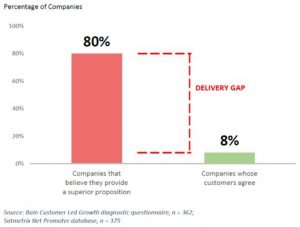“No, they won’t be able to find the button!”
“It’s obvious enough to me! If I can find it, the users should be able to find it too!”In this Article
Have you ever seen a group of designers, writers and product managers debate over anything and everything? Or worse, maybe you’ve been involved one too many times.
I know the feeling. But, I have found the answer to that debate: I ask the user researchers. After a quick test with a few users, the user researchers will deliver the verdict and we return to the drawing board with a much clearer idea of what our users want. Problem solved!

The fact is, crafting the user experience without user research is simply educated guesswork. If we design without consulting our users, we can only make decisions based on industry standards and best practices. If user experience is important to you, user research may just be the most important role in your company.
User Research Is the Foundation of Great User Experience
User Research should be the very foundation of User Experience (UX) design decisions, it allows you to make UX design decisions with confidence. Why? Because it helps you understand your users, it helps you ensure that the product or feature that you and your team are building is what they want.
Why Is it Important to do User Research? Reducing Business Risk
User Research reduces the risks, which includes everything from confusing workflows, buttons that play hide-and-seek or a feature that your users have no use for. Without user research, it’s the blind leading the blind. All the time and resources spent on brainstorming, designing, reviewing, re-designing based on assumptions is wasted.
In addition, no matter how good you are at your job, there is no way to remove internal bias when you are so close to it. What you need isn’t just a fresh perspective, it’s the users’ perspective. Validate and justify decisions with real user data!
In a survey completed by Bain, a large global management consulting firm, they found some startling results. 80% of companies thought they knew best about what they were delivering. But only 8% of those companies’ customers agreed.

When Is the Best Time to Do User Research?
User research is typically done at the start – but even more insightful done throughout- to gather valuable data and feedback. By conducting user research at the start of the timeline, you get to know your users’ needs, behaviours, and pain-points in relation to the product or service you’re designing.
User research, especially done at the start, helps ensure that you are designing with the user in mind, which is the very key you’ll need in creating a successful product. It makes a huge difference in understanding the problem you’re trying to solve as early as possible so that you can start the design process on the right path.
Fret not if you are in the midst of the design process and you have not started with user research. The best time to do user research is throughout the design process. By conducting user research as you design, it won’t just tell you if you’re on the right path but it will also help validate or invalidate your assumptions, identify problems and challenges, find patterns across your user groups, and shed light on their needs, goals and mental models.
Different User Research Methods: Which to Use?
There are two main types of user research methods: qualitative and quantitative. Qualitative Research looks more at how users think and feel, helping to find your users’ opinions, problems, reasons, and motivations. Whereas Quantitative Research is about numerical data that can be measured and analysed, statistics that can be used to quantify the opinions and behaviours of your users.
Here’s a breakdown of various user research methods:
Qualitative Methods:
- Card sorting: Helpful in understanding Information Architecture and naming conventions better. Especially handy in sorting a large amount of content into logical groupings that are easily understood by users. For example, designing the navigation menu of an ecommerce website that has a lot of different products and categories.
- Field Studies: Going into the user’s environment to observe and take notes, and if possible, photographs and videos.
- Focus groups: Groups of participants led through activities and discussion to compile data on a particular service or product.
- Guerrilla testing: Fast & low budget testing methods in the form of street videos, field observations, reviews of paper sketches or online tools for remote usability testing.
- Interviews: 1-on-1 interviews using a selection of questions to prompt the user in describing their pain points, interactions, thoughts and feelings in relation to a product or service, or even the environment of the product/service.
- In-lab usability testing: Observe users completing a selection of tasks in a controlled environment. Users are asked to think out loud in describing their thoughts, actions and feelings aloud, this helps us understand better and comes in handy for later analysis of the video recording.
Quantitative Methods:
- A/B testing: Comparing two versions of a web page, product or service to ascertain which converts the users more. It’s a conducive way to test colours, button placements, banners and other various elements.
- Eye-tracking: This requires an eye-tracking tool to measure and track the gaze of your user’s eye movements, allowing an analysis to see what the users look at. Eye-tracking could be quite expensive, heat mapping is a more affordable alternative
- First click testing: Analyse what your users would click on first to complete their intended task, it helps provide information on users’ expectations. First click testing can be done with paper prototypes, interactive wireframes or an existing website.
- Heatmap: Provides a visual map of data showing how users click and scroll through your prototype or website, helping to show user behaviour and which part gets the most attention. A well known online tool to integrate would be Crazyegg.
- User surveys: A structured format of questions to collect information from a representative sample, a great way to collect a large amount of quantitative data. Surveymonkey is a popular online tool.
- Web analytics: Analytical data that is gathered from a website or prototype it is integrated with, allowing you to see demographics of users, page views and funnels of how users move through your site and where they drop off. The most well known online tool to integrate would be Google Analytics. You may find it helpful to have analytics specialists to plan a holistic approach in measuring the performance across different platforms such as desktop website, iOS app to Android app. You will also need software engineers to help implement the tracking codes as modern website architecture may be more complex. You will get flawed data if your implementation of tracking codes is not done properly. Remember, garbage in, garbage out.
It’s impossible to build a great user experience if you don’t even know your users’ needs and goals. A designer can craft better solutions if they know the users, know the user expectation and mental model, how users react to a particular user interface design, the context in which the users will be using the product/website/app and know what they need to accomplish their tasks.
This is why user research may just be the most important role in your company.
Key Takeaways:
- Crafting the user experience without user research is simply educated guesswork
- User research focuses on understanding user’ expectations, behaviours, needs, and motivations through methodical, investigative approaches. Insights are used to ensure that all product design decisions are made with the user in mind.
- User research is the foundation of great user experience. It contributes to the initial design work and also provides a way to validate design direction.
- The best time to do user research is throughout the design process
- Usability and user experience is measurable through qualitative and quantitative research methods. Learn the limitations of each approach and use them strategically to get the insights that will help you different times.

